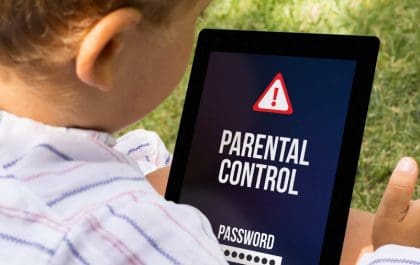by East Tennessee Children’s Hospital
Sore throat and strep throat are fairly common infections among children ages 5 and 15, particularly during the winter months. Because these infections share similar symptoms, sore throat is often misdiagnosed as strep throat. In fact, up to 73 percent of patients with sore throat are given antibiotics, which have no affect on viruses so will not help your child. Not only are antibiotics ineffective with viruses, they are also expensive and the primary cause for the development of antibiotic-resistant superbugs.
“Identifying these infections properly prevents the misuse of antibiotics and the development of long-term complications related to strep throat.”
That is why an accurate diagnosis is important. Identifying these infections properly prevents the misuse of antibiotics and the development of long-term complications related to strep throat.
What is sore throat?
Sore throat is generally the result of a swelling in the back of the throat caused by a viral infection, such as a cold or the flu. It can be the first sign of another illness such as the flu, a cold, mononucleosis and strep throat.
Normally, most sore throats are not serious and usually improve within three to seven days. They are more common among children and teens, because their bodies have not been exposed to as many bacteria and viruses as adults, so their bodies have not yet built up immunity against them. Signs and symptoms include:
- Painful throat
- Fever
- Swollen glands in the neck
- Scratchiness in the throat
- Redness in the back of the mouth
- Bad Breathe
- Runny Nose
- Cough
- Red Eyes
What to Do
Home treatment is usually all that is needed for a sore throat caused by a virus. Here are some suggestions:
- Gargle with warm salt water to help reduce swelling and relieve discomfort.
- Prevent dehydration.
- Fluids may help thin secretions and soothe an irritated throat.
- Hot fluids, such as tea or soup, may help decrease throat irritation.
- Use a vaporizer or humidifier.
- Avoid secondhand smoke.
- Eat cold or frozen liquids such as ice chips and popsicles to also relieve pain and reduce swelling.
- Suck on hard candy or nonprescription throat lozenges (if child is older than 4 years).
- Take ibuprofen or acetaminophen as needed, if able.
Other less common causes of sore throat may require more complex treatment. Get medical help if your child has:
- Difficulty swallowing or breathing
- Tires easily
- Pus in the back of the throat
- Sore throat lasting longer than a week
What is strep throat?
Strep throat is caused by a contagious bacterial infection. Doctors usually test for strep bacteria with a quick strep test or a throat culture. Strep throat is a particularly severe form of sore throat best treated with antibiotics, which will improve symptoms quickly. Children can usually return to school 24 hours after beginning antibiotics if they don’t have a fever and are feeling better. If your child is feeling tired, weak or achy, keeping them at home for another day or two is suggested.
Untreated, strep throat can lead to problems such as rheumatic fever (that can cause permanent heart damage), a complication of the tonsillitis, scarlet fever or kidney disease. Signs and symptoms include:
- A child with strep will initially have a sore throat; however, other symptoms will start to develop in approximately three days such as:
- Red and swollen sore throat with grayish white patches of pus on tonsils
- Difficulty swallowing Headache High fever (101 to 104 Fahrenheit is not uncommon in younger children)
- Lower stomach pain and possible vomiting
- Tender or swollen glands (lymph nodes) in the neck
- Rash
What to Do
Unlike sore throat, antibiotics can be used with strep to reduce the duration and severity of symptoms as well as the risk of complications and the length of time the infection can be spread. Relief should come within 24 to 36 hours after taking the medication. Seek medical care immediately, if symptoms persist or if your child’s swollen throat causes breathing difficulties or problems swallowing. While waiting for the antibiotic to take effect, the sore throat treatments will also relieve the pain and discomfort of strep throat.
How to avoid getting sore throat or strep throat
Prevention is the best method:
- Wash hands frequently.
- Don’t share food, drinks, drinking glasses or towels.
- Keep eating utensils separate and wash in hot, soapy water or dishwasher.
- Cough or sneeze into elbow not hands.
- Avoid contact with people who have strep or sore throat.
Visit www.etch.com for more information.
Related posts
Newsletter Subscribe
Newest Posts
Set Up a Parental Control for Online Safety
Have you ever wondered how long your children spend in front of a device without your supervision? Yes, it is…
Adopt A Life, Save A Life
By Jeff Ashin, CEO, Young-Williams Animal Center. Photo by: Young-Williams Animal Center Are you or your child thinking of adding…


